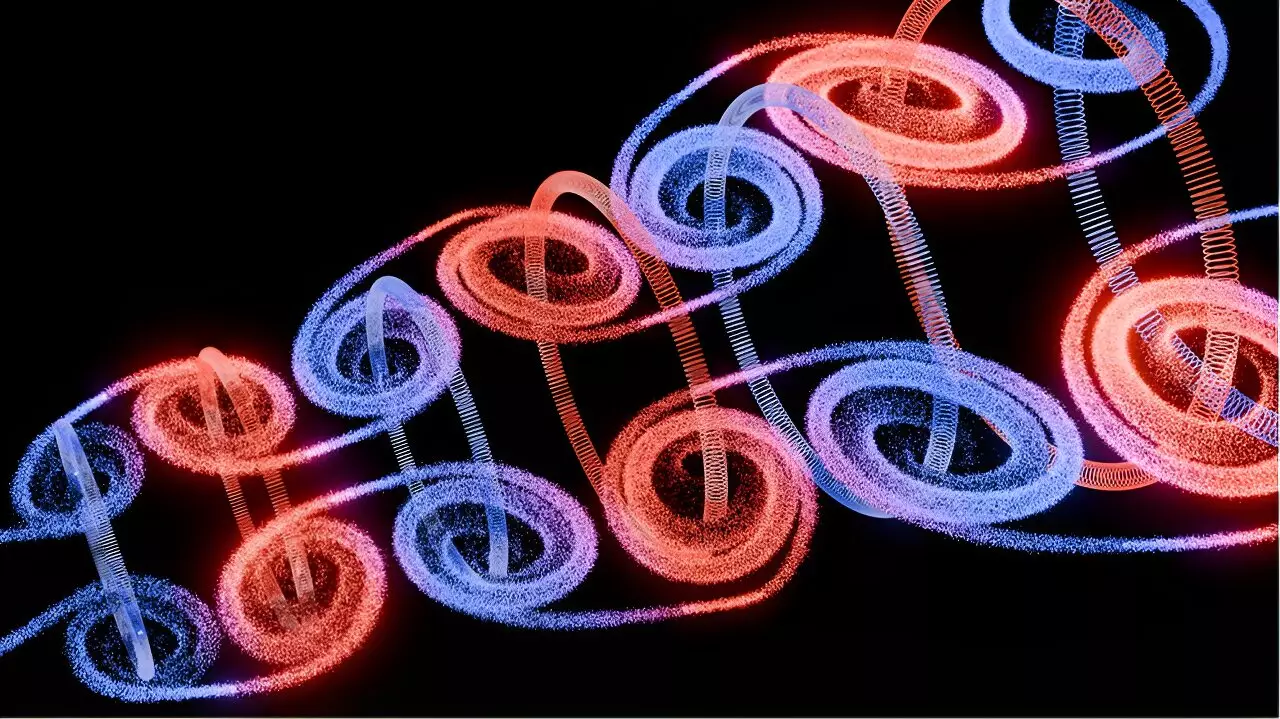In a recent study published in Nature Communications, physicists from Singapore and the UK have delved into the realm of optical analogs of the Kármán vortex street (KVS). The optical KVS pulse showcased in the study sheds light on the intriguing parallels between fluid transport and the energy flow of structured light. Lead author Yijie Shen from Nanyang Technological University highlights the significance of this research by stating, “We introduce a type of light pulse with a field structure that bears striking resemblance to a von Kármán vortex street, a pattern of swirling vortices observed in fluid and gas dynamics.”
The structured light unveiled in the study exhibits a robust topological structure of skyrmions in condensed matter. Unlike previous work on optical skyrmionic beams and pulses, the skyrmionic field configuration in nondiffracting supertoroidal pulses (NDSTPs) showcased in the study is not constrained by diffraction and can persist over arbitrary distances during propagation. This breakthrough opens up avenues for potential applications such as light-matter interactions, super resolution microscopy, and metrology.
Skyrmions, complex topological particles initially proposed as a unified model of the nucleon by Tony Skyrme in 1962, exhibit behavior akin to nanoscale magnetic vortices with intricate textures. While previous optical skyrmions in free space either do not propagate or collapse rapidly, the newly introduced light pulses do not spread during propagation, allowing the skyrmionic fields to persist. This feature enables the study of the propagation dynamics of electromagnetic skyrmionic fields and presents opportunities for directed energy channels for information transfer applications.
The authors of the study foresee various applications of the NDSTPs, ranging from metrology to spectroscopy of toroidal excitations in matter. The deeply subwavelength singularities of the pulses offer promise for applications in metrology, while the topological features of the pulses could be utilized for long-distance information transfer in fields such as telecommunications, remote sensing, and LiDAR.
The KVS, a classical flow pattern consisting of organized swirling vortices with circulations of opposite signs, is renowned for its beauty and power. The intersections between science and the humanities are evident in the depiction of interlaced vortices in artworks and the inspiration derived from them for scientific research. Noteworthy instances such as the Tacoma Narrows Bridge incident in 1940 underscore the impact of vortex streets on physical structures, highlighting the immense power of the KVS.
The study on optical Kármán vortex street pulses opens up new avenues for exploring the intricacies of structured light and its parallels with fluid dynamics. The potential applications of these pulses in various fields underscore the significance of this research in bridging the gap between fundamental physics and practical applications. As we continue to unravel the mysteries of optical skyrmions and their behavior, the implications for future technologies and scientific advancements are vast and promising.


Leave a Reply